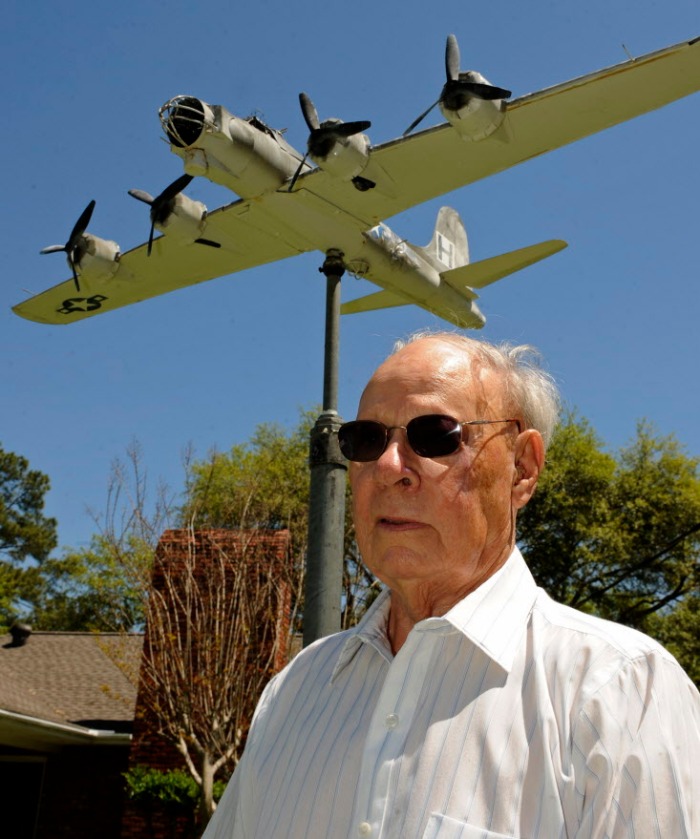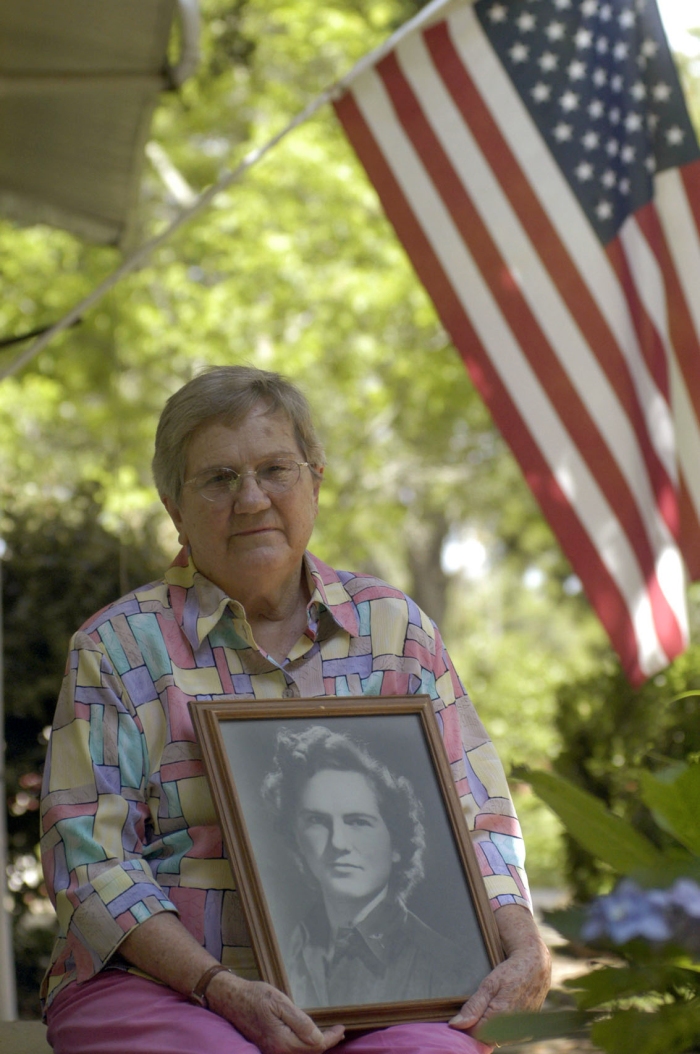 Charles McGowan kept a B-17 wind indicator in his back yard. (Photo used by permission of The Advocate, Baton Rouge, Louisiana)
Charles McGowan kept a B-17 wind indicator in his back yard. (Photo used by permission of The Advocate, Baton Rouge, Louisiana)
By George Morris
From an exclusively visual perspective, Charles “Chub” McGowan had the best seat during the air war over Germany late in World War II.
Sightseeing, however, wasn’t on the agenda.
McGowan, a Pennsylvania native and Baton Rouge resident since 1969, was a ball turret gunner from late July 1944 to late February 1945, when the crew of the B-17 bomber called “Patty Jo” completed their 35th mission, earning them that rare blessing of being sent back to the United States for the rest of the war. With thousands of airmen killed or captured, those completing a full tour of duty earned membership in the “Lucky Bastard Club.”
None of them probably felt luckier than the ball turret gunner.
Continue reading “Ball turret gunner: ‘A ringside seat’ to air combat”
 Don Menard shows a letter and gifts he received in 2004 from Vasily Bezugly, a Soviet soldier who helped liberate Menard at Stalag Luft 1 near the end of World War II in Europe. (Photo used by permission of The Advocate, Baton Rouge, Louisiana.)
Don Menard shows a letter and gifts he received in 2004 from Vasily Bezugly, a Soviet soldier who helped liberate Menard at Stalag Luft 1 near the end of World War II in Europe. (Photo used by permission of The Advocate, Baton Rouge, Louisiana.) Leo Walsh spent three months as a Marine occupying Nagasaki, Japan, where the second atomic bomb blast led to Japan’s surrender. (Photo used by permission of The Advocate, Baton Rouge, Louisiana)
Leo Walsh spent three months as a Marine occupying Nagasaki, Japan, where the second atomic bomb blast led to Japan’s surrender. (Photo used by permission of The Advocate, Baton Rouge, Louisiana) American Waco CG-4A glider being towed in flight (National Archives)
American Waco CG-4A glider being towed in flight (National Archives) Marion Matherne holds photos of himself (lower right) and his six brothers, all of whom served in the military in World War II. (Photo by Travis Spradling, used by permission of The Advocate, Baton Rouge, Louisiana.)
Marion Matherne holds photos of himself (lower right) and his six brothers, all of whom served in the military in World War II. (Photo by Travis Spradling, used by permission of The Advocate, Baton Rouge, Louisiana.) Anderson Wilson served in the ‘Ghost Army’ that tricked German soldiers into believing the U.S. Army had significant forces in areas that were lightly defended. (Photo by Scott Threlkeld, used by permission of The Advocate, Baton Rouge, Louisiana)
Anderson Wilson served in the ‘Ghost Army’ that tricked German soldiers into believing the U.S. Army had significant forces in areas that were lightly defended. (Photo by Scott Threlkeld, used by permission of The Advocate, Baton Rouge, Louisiana) Siblings Marie Jorda Jones and Gerald Jorda saw their country, France, occupied then liberated during World War II. (Photo by Travis Spradling, used by permission of The Advocate, Baton Rouge, Louisiana)
Siblings Marie Jorda Jones and Gerald Jorda saw their country, France, occupied then liberated during World War II. (Photo by Travis Spradling, used by permission of The Advocate, Baton Rouge, Louisiana) Irma Darphin served as a nurse in Europe after the Normandy Invasion. (Photo used by permission of The Advocate, Baton Rouge, Louisiana.)
Irma Darphin served as a nurse in Europe after the Normandy Invasion. (Photo used by permission of The Advocate, Baton Rouge, Louisiana.)
 Robert Black fought with the 10th Mountain Division in Italy. (Photo by Bill Feig, used by permission of The Advocate, Baton Rouge, Louisiana)
Robert Black fought with the 10th Mountain Division in Italy. (Photo by Bill Feig, used by permission of The Advocate, Baton Rouge, Louisiana)